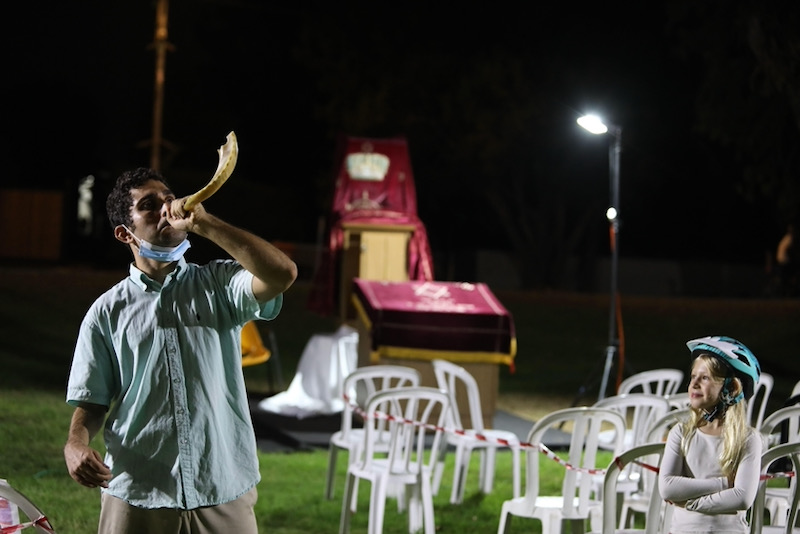Jews and Catholics may live together in Britain, often next door to each other, but have had a very different Covid experience in three respects. They epitomise some of the practical differences between the faiths that are not as obvious as some of the theological ones.
The first concerns where we pray. For Catholics, religious life tends to revolve around the church. It is their spiritual home and a high percentage of rituals and worship takes place there. It was no surprise, therefore that the closure of churches caused an enormous sense of loss and religious pain.
For Jews, by contrast, the closure of synagogues was inconvenient but not worrisome. For us, the home has always been just as important, with many of the weekly and festive observances being domestic ones, be it greeting the Sabbath, the Passover meal, building a tabernacle in the garden or lighting the Hanukkah candelabra. To a large extent, religious life continued unabated.
The second difference is the way we pray. Here Catholics had the advantage, for there is as much emphasis on individual prayer as congregational worship. Yes, it is lovely to sing hymns with others around you, but personal communion with God is the very heart of a Catholic’s prayer life.
For Jews, though, prayer is a communal exercise. In fact, there are significant parts of the service that one is not allowed to do without a quorum of ten people, including what are generally regarded as the two most important aspects: the reading from the Torah/Pentateuch, and the memorial prayer for those who have passed away.
It matters not if the service takes place in any building apart from a synagogue – from one’s front living room to a school hall – but without that quorum our prayer life is stymied...and that is exactly what happened during the pandemic and the ensuing lockdown.
The third difference is fiscal. Many churches still rely to a significant extent on the weekly collection on a Sunday. It is an important part of their revenue stream, but without any services, it dried up completely.
Jews never bring money to services, but contribute to the synagogue’s upkeep via a membership system that involves paying an annual subscription. Although some members had to reduce or even cancel their contribution because of their own loss of income, most continued to pay through the direct debits they had set up.
Amid these differences, there was also one crucial similarity. Those churches and synagogues that managed to maintain services through digital technology – be it live-streaming or Zoom – found that their audience shot up, with many more people attending virtually than previously had in person.
The rise in numbers arose for a variety of reasons: those who had always intended coming but never found the time previously; those physically unable to attend because of mobility or distance issues; those who were lonely and wanted to interact with others; those felt the need for the sense of hope religion has to offer amid the insecurity surrounding them.
The obvious question which faces Jewish and Catholic clergy alike is how to keep the newcomers once lockdown is over. To some extent, it is beyond our control as the external factors that brought most of them may disappear and their priorities will change as a result. However, it will not say much for the appeal of what we offer if none of them remain. So a daunting score-sheet lies ahead!
At the same time, just as problematically, we have to coax back the regulars upon whom we always relied and who may now be reluctant to return. This is because they have simply got out of the routine of weekly attendance – and habit is a powerful religious tool.
It is might also be that some find they prefer worshipping from home, saving them the effort of a journey or the time spent travelling. Everyone says they are “desperate” to get back to normal, but that may not include all aspects of their former lives, and it is possible that places of worship may be one of the victims.
It will be important to remember that the end of lockdown will not signify the end of precautions. Social distancing, ventilation and mask-wearing may still be a feature of our lives, even once most activities start up again. We will have to reassure those over 50 or with underlying health conditions that it is safe to come back.
It means that synagogues and churches will need to have a definite campaign of revitalisation to keep both old-comers and newcomers. This could be a special “welcome back” service, but also, as we intend doing at my synagogue, holding a communal picnic – outdoors, easy to organise, suitable for all ages and for those of varying degrees of faith!
Meanwhile, our regular activities will have to take account of our online outreach and keep it going as an option alongside in-person events. This will range from mothers and toddlers to friendship club to services. We do not want those who logged on to log off and go off.
However awkward it will be for clergy to adapt to a hybrid audience, that will be the reality which they have to accept. The new religious world will also include zooming funerals and using emails for the parish magazine as much as possible.
During the lockdown, my synagogue had the motto: “The building is closed, but the community is still open.” We will soon have to change that to: “The building is now open, but the community is both there and on-line.”
Rabbi Dr Jonathan Romain is minister of Maidenhead Synagogue and author of Confessions of a Rabbi (Biteback)



 Loading ...
Loading ...
What do you think?
You can post as a subscriber user ...
User comments (0)